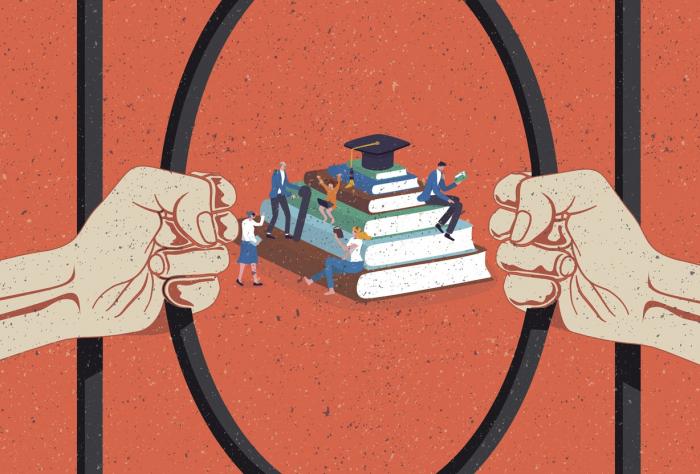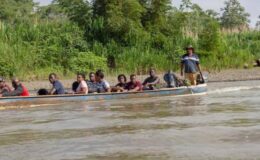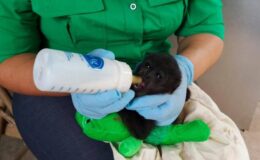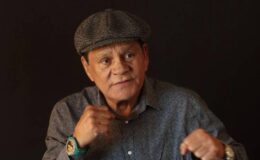HUMAN RIGHTS ignited at issues in Panama, as well as other Latin American countries.
- By : James Bryson
- Category : Human Interest, Infrastructure

PANAMA prison system is known to the world as being one of the worst.
Three hundred and ninety nine tongues of men begging to be taken out of the cell in the heat of the night awaited Felipe and the police. The officers ignored the call. Four walls, one door, and four hundred prisoners breathed through only four orifices. One of the detainees died of suffocation.
Felipe (fictitious name to protect identity) entered the La Ceiba Penal Center, Honduras, after carrying drugs from a mara in the Central American country like a mule.
He dedicated himself for a long time to protecting, selling and consuming drugs until the police captured him; Fourteen years in prison was his sentence, he paid 7 years for good behavior, he was released from prison in the 1990s. “I was linked to them (mara), but I did not get tattooed (tattooed) with the insignia of any mara,” he clarified. Felipe during a conversation with La Estrella de Panamá.
Felipe’s reality is a sample of what prisoners experience in Latin America and the Caribbean. According to the World Prison Brief (WPB), the world’s leading database on prison matters, in 2021, the regional prison occupancy average is 160%. The Inter-American Development Bank (IDB) conducted a survey (2021) that showed that in the region 58% of prisoners do not sleep on a bed.
Between 2018 and 2022 the Panamanian prison population grew by 23%. Overcrowding reaches 148% until October 2022, according to the direction of the country’s Penitentiary System, while in Granada (233.8%), Peru (223.6%) and Honduras (204.5%) their prison populations double the space available.
The IDB estimates that Latin America and the Caribbean (LAC) has one and a half million inmates. The incarceration rate has doubled since 2000: it increased 120% compared to 24% in the rest of the world.
The region almost doubles the incarceration rate of the world average of prisoners. In LAC there are 262 inmates per 100,000 inhabitants, while in Africa and Asia the same figure is 97; in Europe, 187; in Oceania, 157 and the world average is 145.
LAC spent 0.20% of GDP on prison administration, equivalent to $6,504.8 million in the maintenance and construction of new prisons. Labor force losses due to incarceration represented 0.19% of GDP, that is, $7,336.6 million; making a total of $13,841.4 million only during the 2010-2014 period.
“Both figures add up to 0.39% of GDP, exceeding the amount that governments transfer to the poorest households through conditional money transfers,” the report details.
The figure that emerges from the study ‘The costs of crime and violence, new evidence and constitution in Latin America and the Caribbean’ of the IDB, also breaks down other monetary losses due to crime:
The GDP of Latin America and the Caribbean, due to the social cost of homicides, loses 0.36%, equivalent to $10,545.8 million annually (2014-2015). Honduras, (6.51%); El Salvador (6.16%) and the Bahamas (4.79%) lead the countries with the highest crime costs in LAC.
The first night that he spent the night in the “bartolina” (jail) was horrible for Felipe. He didn’t have a bed, sleeping on his stomach was not an option, lying on his back to the ground was a utopia. Resting next to the inmates like sliced loins and covered in sweat was the only option.
“What a horrible thing, you know, 400 people, there is nothing, the same ticket. The heat. Awful,” she said. However, about 100 people had access to “stages” (cabins), the other 300 inmates had their space secured on the floor.
In Honduras, 7% of the prison population is sentenced for illicit association, that is, they have ties to the gangs. “The majority is for drug trafficking, homicide, the percentage of robbery is higher than that of illicit association,” jurist Glenda Ayala, president of the National Committee for the Prevention of Torture, cruel, inhuman or degrading treatment, explained to this outlet. from Honduras.
For Ayala, prevention and protection policies must be increased to prevent young people from being linked to maras and gangs. “We know what is the phenomenon that causes the problem, but if we do not attack the cause, well, we are not doing anything either.”
Ayala explained that within the Honduran prison system the age range of detainees ranges between 20 and 30 years. The educational level of the inmates is very low, she added. “They are people who belong to the lowest economic and social strata. We are always emphasizing the criminalization of poverty, because Honduras has a [poor] face.” The phenomenon spreads to other countries in the region.
During the last few years, the expert added, the military police carried out raids in the neighborhoods where they arrested entire family nuclei dedicated to drug trafficking. “There are no conditions, suddenly, their husbands are in jail, they have 6 children and they have to be fed, it’s a vicious circle: This woman comes out with a measure of community work and commits the crime again because she says: ‘I have to keep to my family and I have no way”.
According to the IDB, education opens a future of opportunities for young people through appropriate initiatives. Schools provide safety, security, and opportunity. “A school that is immersed in a place where there is urban poverty and violence often becomes more than a space for learning to read, write and math. It becomes a safe space, where students can act like children and young people like young people,” says the international organization on its digital portal.
How much does the region invest in education?
Public social spending on education at the central government level in the region has been between 4% and 4.5% of GDP in the last decade, exposes the report ‘Social Panorama of Latin America and the Caribbean The transformation of education as a basis for sustainable development’ of the Economic Commission for Latin America and the Caribbean (Cepal).
In 2021, the volume of public resources allocated to finance education reaches an average of $318 per person in Latin American countries. Some $353 in South America and $277 between Central America, Mexico and the Dominican Republic. It rises to $606 in the five Caribbean countries considered, the report specifies.
“The country that in 2021 allocated the most central government resources to education, in relation to GDP, was Costa Rica (6.3%), followed by Barbados (5.9%). A second group is made up of Jamaica, Honduras and Chile, with amounts between 4.8% and 5.3% of GDP, and they are followed by El Salvador, Uruguay and Nicaragua, which assign to this line between 4, 1% and 4.5% of GDP”, breaks down ECLAC.
Investing is not the same as quality
Since 2015 there has been a decreasing trend towards investment in education in the region, according to the specialist of the Regional Office of Education of the United Nations Educational, Scientific and Cultural Organization (Unesco) for Latin America. and the Caribbean, Alejandro Vera.
The indicators, which are measured in proportion to public spending in relation to GDP, “today it is difficult to see in this period of pandemic because the economic crisis alters all these values. Countries have lost growth, gross domestic products have fallen.
Vera highlighted a reality: the highest spending that a country can have is not synonymous with educational quality. “Financing is a necessary condition to carry out educational public policies, but it guarantees absolutely nothing. That is clear, without recourse nothing is done. Now with resources, you have to invest it well, allocate it by educational level in an appropriate way, especially in countries with a significant level of decentralization”.
“There are many edges to look at and a lot of analysis to do, but yes. I would say that it is a sufficient condition to arrive at an educational policy, but it is not enough”.
ECLAC estimated that 10.4 million children and young people were excluded from access to primary and secondary education in Latin America and the Caribbean in 2019. After the pandemic, the United Nations Children’s Fund (Unicef) He warned that in Latin America and the Caribbean there are approximately 117 million children and adolescents of the age to attend initial, primary and basic secondary education. However, only 6.5 million of them do not attend school and 15.6 million attend classes dragging failures and signs of inequality expressed in two or more years due to school lag.
Inequality, the new plague
“Social inequality is the new plague of the 21st century. This was evidenced in the covid-19 crisis,” said the president of the College of Sociology and Social Sciences of Panama, Briseida Barrantes.
“With a pandemic and without a pandemic. We are in a well fractured system where the popular sectors live with deprivations, public services are not accessible to all (…) people survive; clean windows, sell things, are palliative. States have a responsibility” with their citizens, the sociologist added to this outlet.
Internationalist lawyer Jorge Florez recommended strengthening educational systems to eradicate the prison phenomenon. “Latin Americans are very given to immediate solutions, this is in the medium term, it can be a transition to 30 years.”
“The penitentiary system is absolutely questioned as such, [generating changes] is achieved through a good education, from the small child until it reaches its adult form,” concluded the specialist in penitentiary issues
The United Nations Standard Minimum Rules for the Treatment of Prisoners establish that all prisoners “have the right to be treated with respect due to their inherent dignity and worth as a human being.”
Education is one of the 10 fundamental rights of children, drafted in the Declaration of the Rights of the Child in 1959. Latin America invests in the prison and educational systems for decades without effective results, the figures prove it.



No Comments